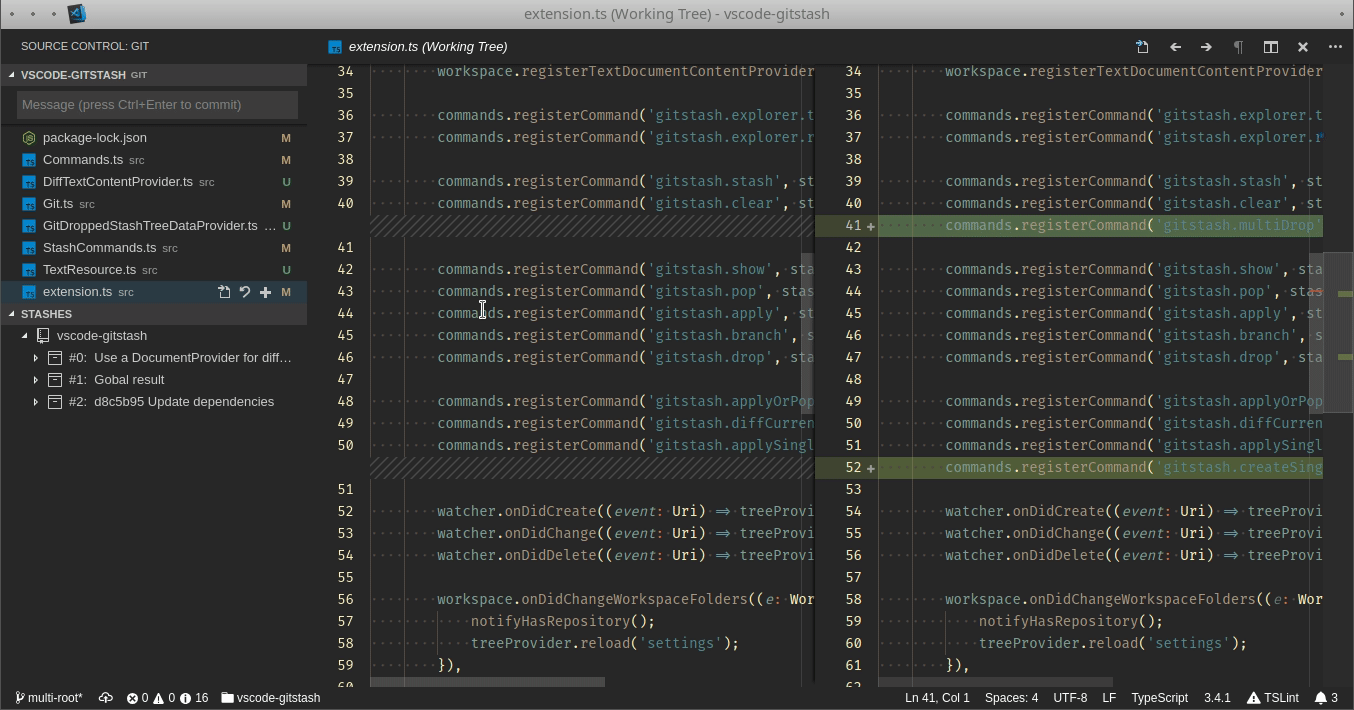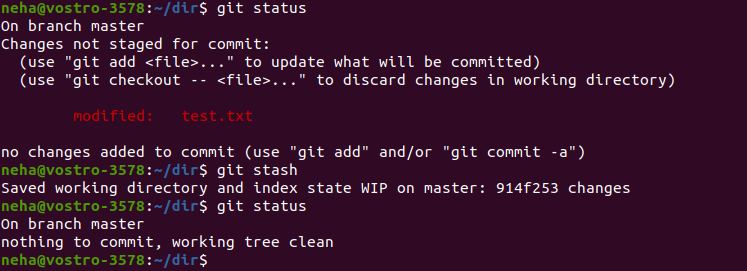
You might be required to submit a merge request before the merge is permitted. When you’re completely done with your work, the next step is to merge your changes to the source of truth (for example, the main branch). Incorporate changes that other members make into the branch as often as you can using the Pull command.
#Git stash delete all update#
Some best practices can help you avoid conflicts: Update the remote branch with your changes frequently using the Push command. In this case, you or your teammate would have to take steps to manually resolve the conflict.

Sometimes, both you and your teammate might change the same line in different ways, resulting in a conflict. If other team members are working on the visual application, you might all be working off the same branch and your work might overlap.
#Git stash delete all code#
Source code in the repository, including all branches, by opening Out the branch in their workspace and view the changes. Once your changes are part of the project’s Git repo, your team members can check (In Git terms, you do a Git Push operation to add it to the project’s Git repo if a team member does a Git Pull operation at this point, they will get a copy of your branch as well.) When you’re ready to publish the work you’ve done in your private branch, you first Push your changes into the remote repository, thereby exposing your changes as a branch to everyone else in your project. These commit messages can help you later to identify which files were changed and why. You can also add a commit message describing the reason you updated those files (for example, "Added new layout X for field Y"). This branch is where you work on your visual application.Īs you make changes, you frequently use the Commit action to save your source file changes to the local copy of your repository. Your workspace will contain a branch (which might be new or might already exist), but no one else can see the changes you make to the branch in your workspace until you choose to make them visible. When you create a workspace (or one is created for you), you get a clone of the project’s Git repository and all its branches. If you’re unfamiliar with Git commands, it may be helpful to review the relationship between your project, your workspace, and your Git repository. Here is a description of the icons that you'll see: These overlay icons indicate the status of the artifact or file with regard to the branch that your workspace uses (uncommitted, conflict, or recently added).
#Git stash delete all series#
When conflicts exist, the Git Panel provides tools to assist as you review and resolve issues.Ī series of overlay icons also appear when you create, modify, or delete files. You'll see a count of the files that have changed in the workspace as well as a color indicator of the type of changes green ( ) indicates new files, blue ( ) indicates modified files, and red ( ) indicates files that conflict with changes made by other team members. You can use this badge view-without actually accessing the Git Panel-to get a quick Git summary of your workspace. You can also perform operations at the file level in the Git Panel.Īs you make changes in your workspace, you'll notice the Git Panel badged to indicate status. It also includes a menu (Label 3 in the image) that lets you access a subset of the header's Git commands.


Oh, and if your working tree is dirty, you have to do a git stashĪctually I just reread the post I linked to and specially the comment "word of caution 2" įrom that I learned that git seems create a new commit and moving the pointer to it, rather than deleting it when using force push. See Git Magic Chapter 5: Lessons of History - And Then Some for more Then, force push to GitHub by using git push origin +master. Git rebase -i HEAD~2 and delete the second line within the editor For example, if it's your last commit, you can do Note: please see alternative to git rebase -i in the comments below-įirst, remove the commit on your local repository. You have an really good answer for that here:


 0 kommentar(er)
0 kommentar(er)
